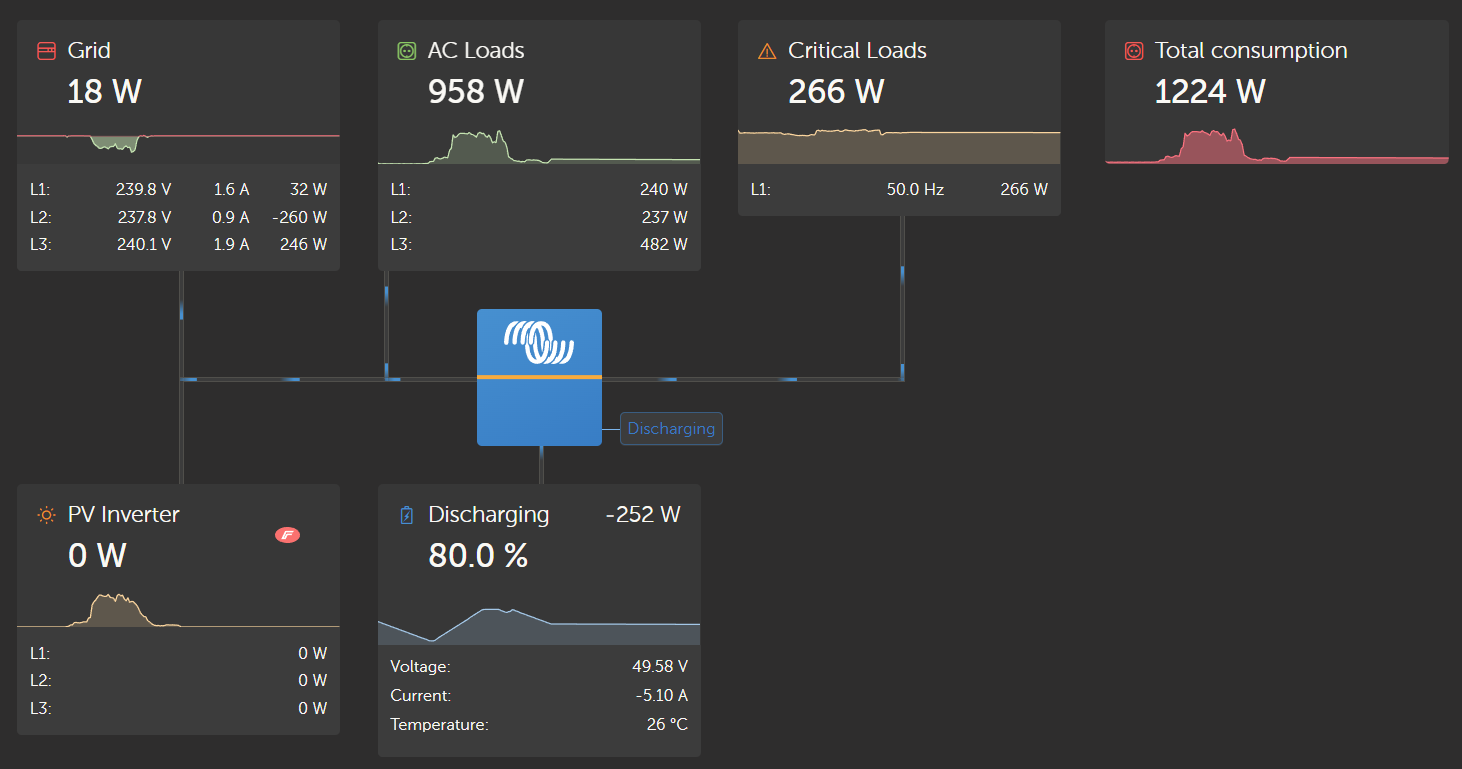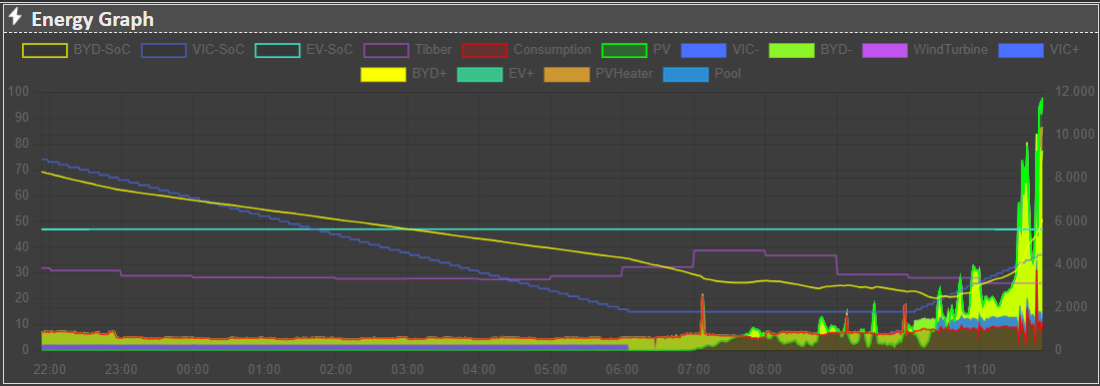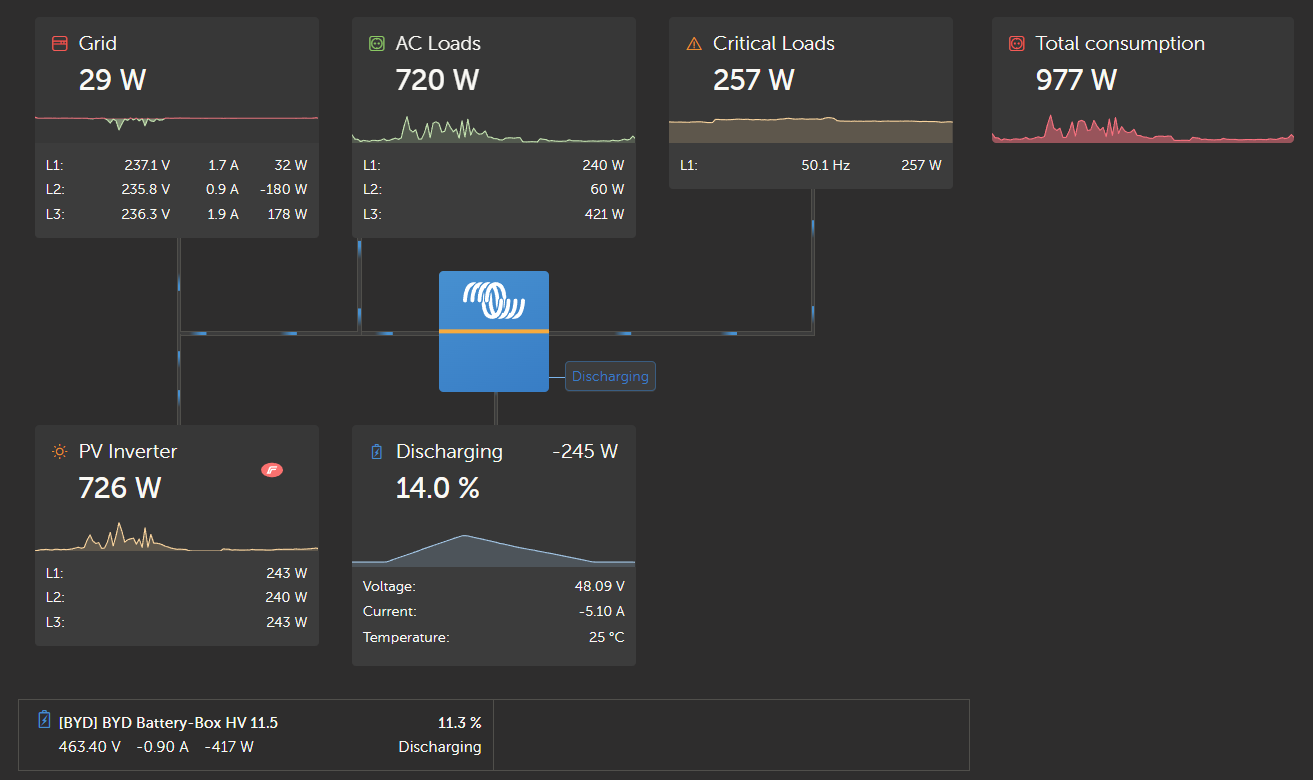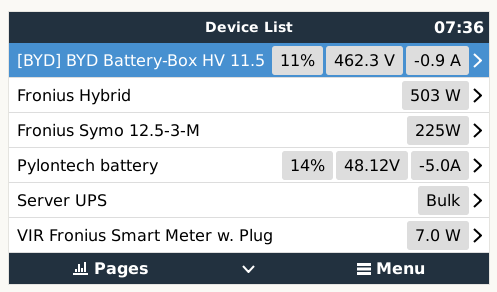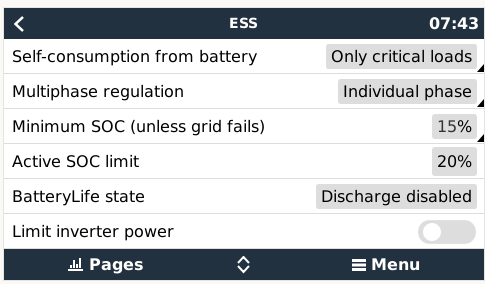Hello,
i'm currently running a little unusual setup, but got everything working (technically) it seems. However, I'm not 100% satisfied and not sure if this arrangement may cause any issues - So i'm searching for ideas how to improve this (or notes if there are any safety concerns, of course)
First, I'm running 2 Fronius PV-Inverters. One is a Regular Symo (12kW) and one is a SymoHybrid (5kW), which also has a 12.4 BYD Battery Box (HV-Battery) directly attached. This battery is lasting almost through the night for our self-consumption, which lead to the current improvements:
I'm having a Server-Rack, hosting everything relevant for my home and business. Servers, Switches (Poe) and so on. The general load of our home is 800 Watts, where a constant 300 Watts are dedicated to that server Rack. Now, recently my UPS died and a new one with lead batteries seems like yesterdays news. So, I decided to go for a Multiplus 48/800/9 and a Pylontec UC3000. (~3.5 kWh)
This works fine as UPS, and also servers a total runtime of about 12hours. So, my thoughts are to use that second battery to support the main battery as well. Going down to like 25% every night still leaves plenty of UPS-capabilities to shut down servers savely in case of a Power-Loss.
I've also used a script found on github (https://github.com/ayasystems/dbus-fronius-smart-meter) to add the fronius smartmeter to the cerbo, which works nice.
So, with all setup, the overall image in the VRM Portal looks like that, where the BYD Battery is connected directly to the PV-Inverters and not visible - and that is the point that is causing a lot of issues, will explain bellow:

The ESS is perfectly fine charging the second battery from solar in this situation. However the first problem is the invisibility of the BYD-Battery connected to the Fronius Hybrid inverter. It will result in a constant "view" that the PV-Inverters are delivering like 800-900 Watts even at night - which causes the ESS to do nothing with it's own battery, because obviously it is assuming that there is enough Solar-Power available:
In ESS there is the option to set the Grid-Metering to "Inverter/Charger" rather than "External Meter", so while this sounds like exactly what I need ("The inverter would determine it's Grid-Pull and use it's battery to 0 that as grid setpoint), the manual unfortunately states, that for this setup, any PV-Inverters have to be connected to AC-Out - which they aren't and obviously can't.
So, to have ESS working correctly, I added a Shelly Plug between the Multiplus and my "Home-Grid" (https://github.com/Telekatz/venus.dbus-shellyPlug/), removed the Shelly Smartmeter Script, set the Shelly Plug to act as Grid-Meter - and finally also removed the Hybrid inverter.
This now leads to the BYD-Battery becoming invisible, and the inverters ESS acting like it is it's own tiny island, only charging of solar when the 12kW inverter says that there is enough power. However, due to removal of the fronius smartmeter, remaining AC Loads and actual Grid-Consumption become invisible as well. This is sad, cause I really like the VRM. 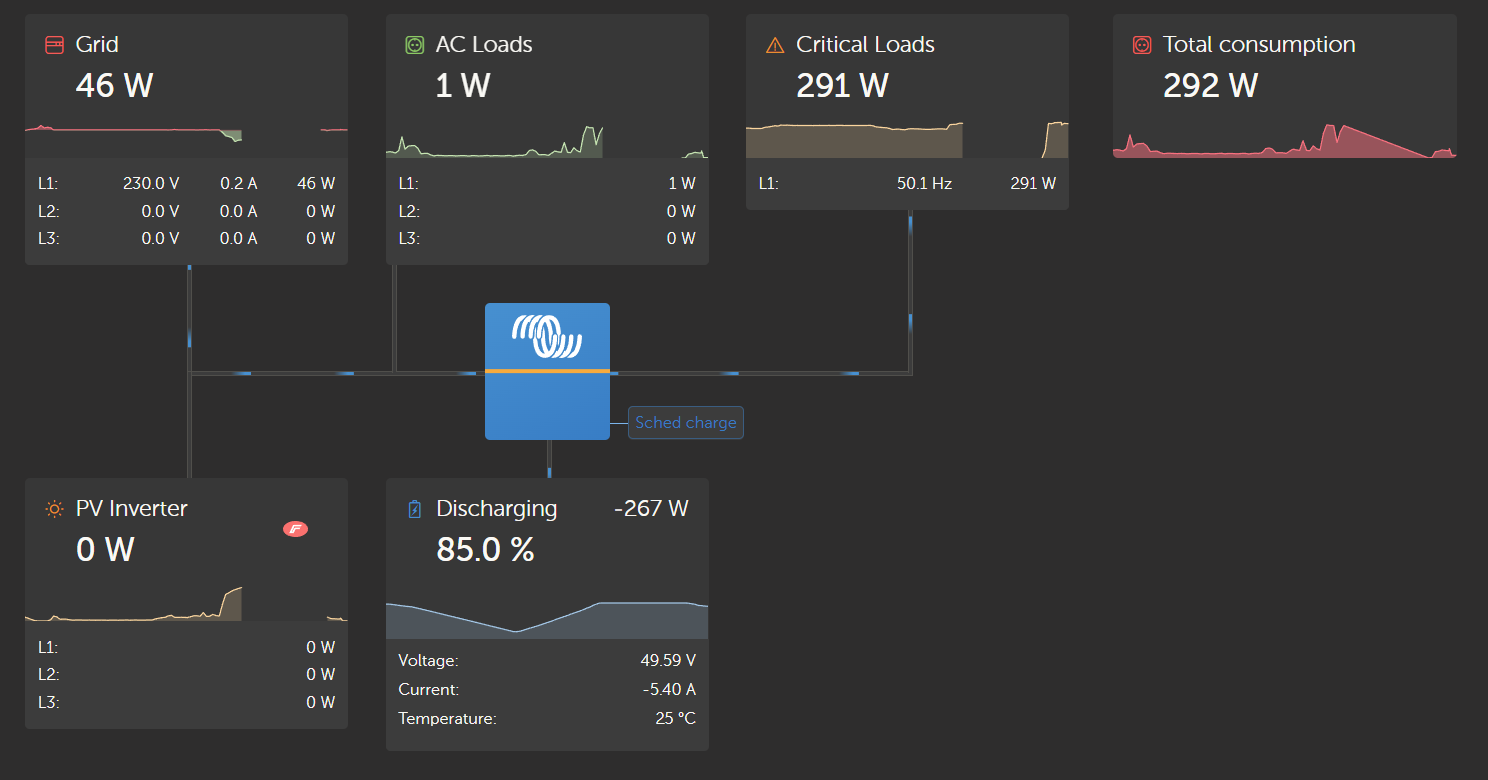
The image now is "slightly" Wrong, regarding the meter, it would actually look like this: 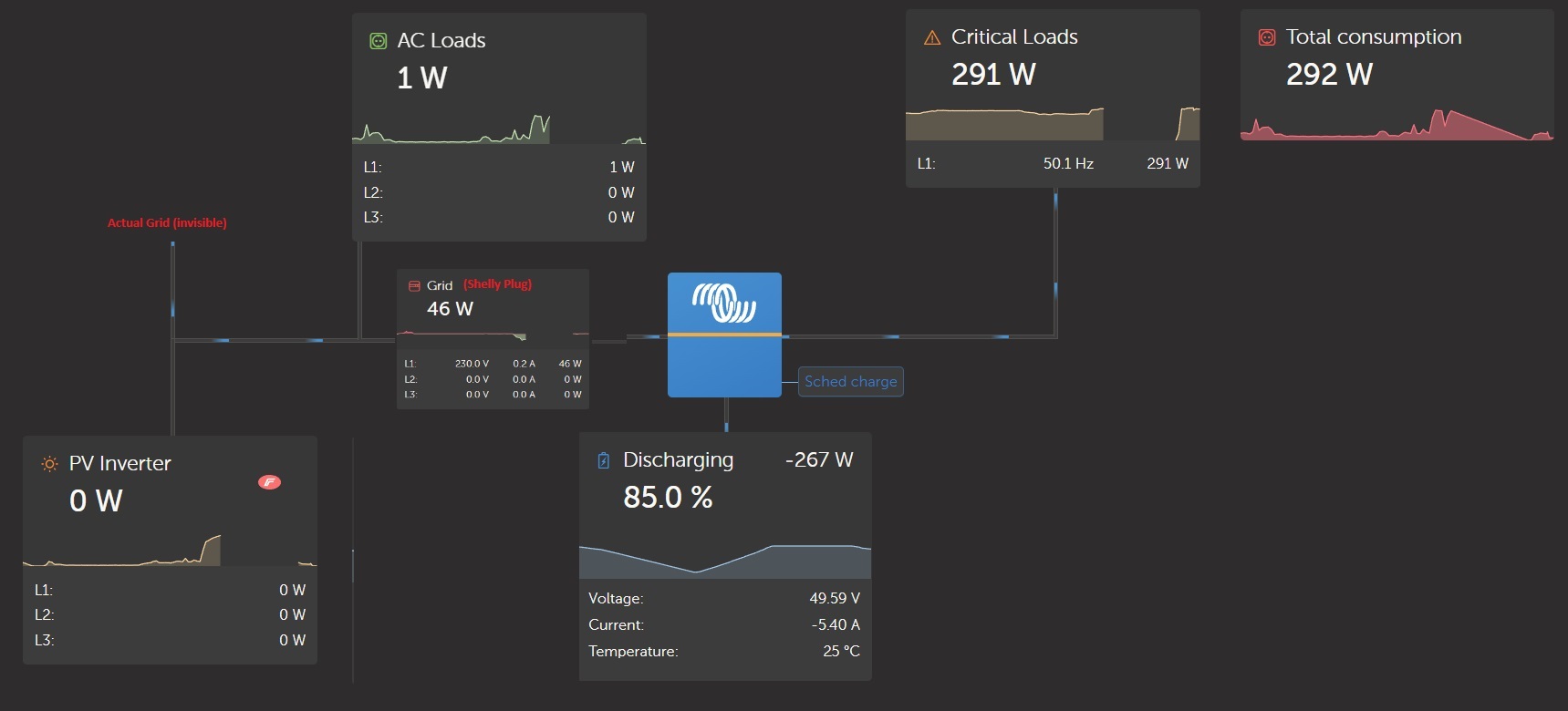
I've also set the "Grid Setpoint" to 30W to ensure there is a constant pull on the AC-IN of the Multigrid. Not sure if required, but makes me feel to have more control over the energy not flowing "backwards". (I've also set to only support Critical Loads with Power, but in ESS Mode 3, I got it to feed in 600 Watts, so not sure if that option is working correctly)
---
Yeah, so I got It working as expected for the moment. But as you can see from the missing information it is not satisfying with regards to the VRM display.
Any Ideas, if this setup can be operated with ESS, while having the Hybrid Inverter, Fronius Meter and BYD Battery beeing shown as well?
I'm a software engineer, so if that is not working out-of-the-box, my next approach would be to reverse engineer the scripts for the fronius-meter / shelly plug and adapt them to create 3 new versions:
1) Injecting the hybrid inverters power MINUS battery feed in.
2) Show the Battery-Feed-In from the BYD-Battery, maybe as a Generator, or whatever else can be "added" on the AC-Side through dbus. (At least I think that ESS then would say: "Okay, 0 PV Power, 800 Watts from Generator only - so we discharge and don't charge")
3) Also I would need to mess arround with the smart-Meter script to inject the shellies Value as Phase1, while adding the original Phase1 Value (minus shelly plug) to Phase2 to get a correct "total". That way, the Multigrid could "balance" on the reading of L1 of what he thinks to be L1 of the grid meter, while in realty he only balances with regard to the shelly and the grid meter is actually handled by the fronius Hybrid (which does does this independent of the VRM / ESS).
But I would prefer a solution that is a bit less hacky :)

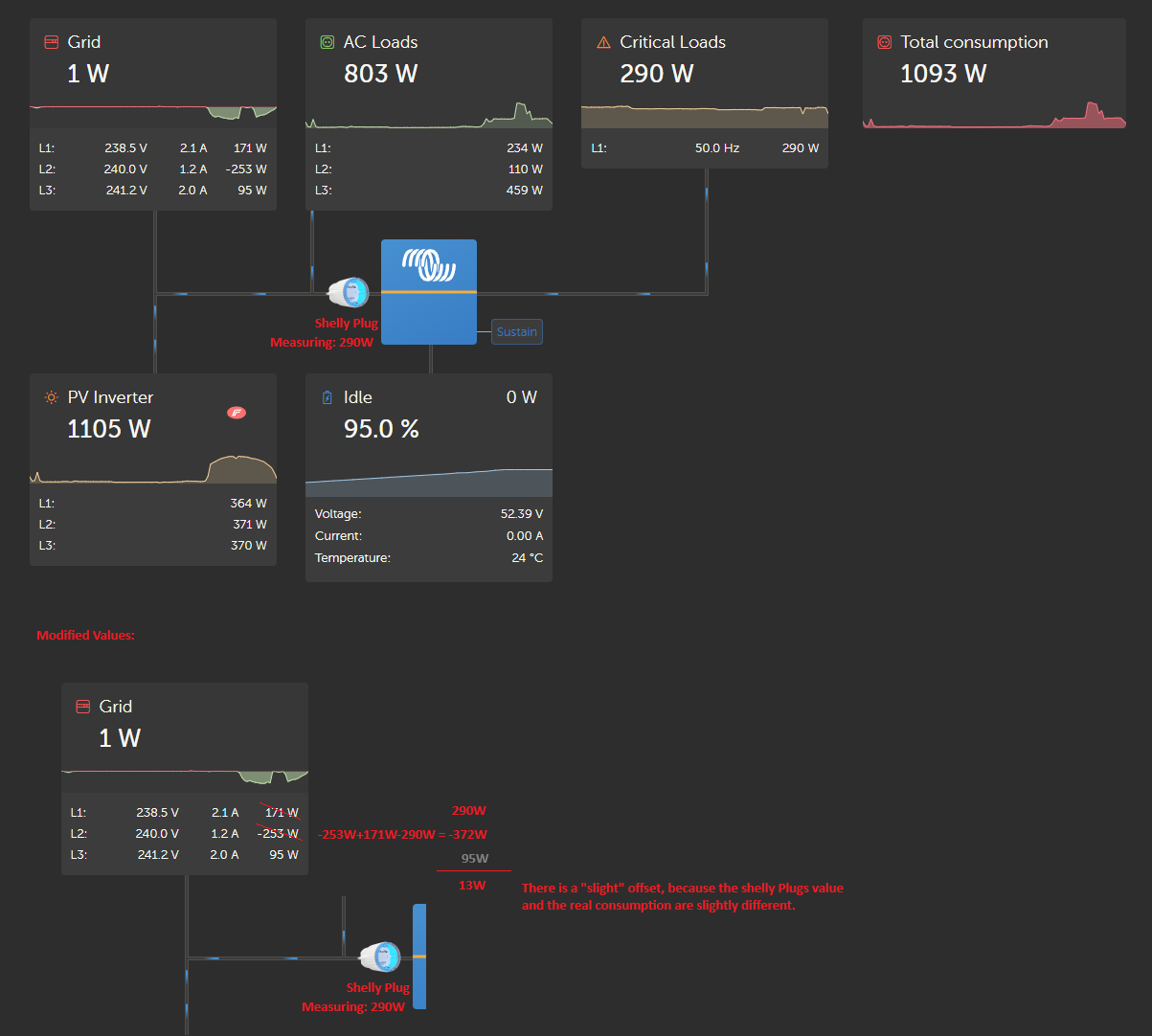
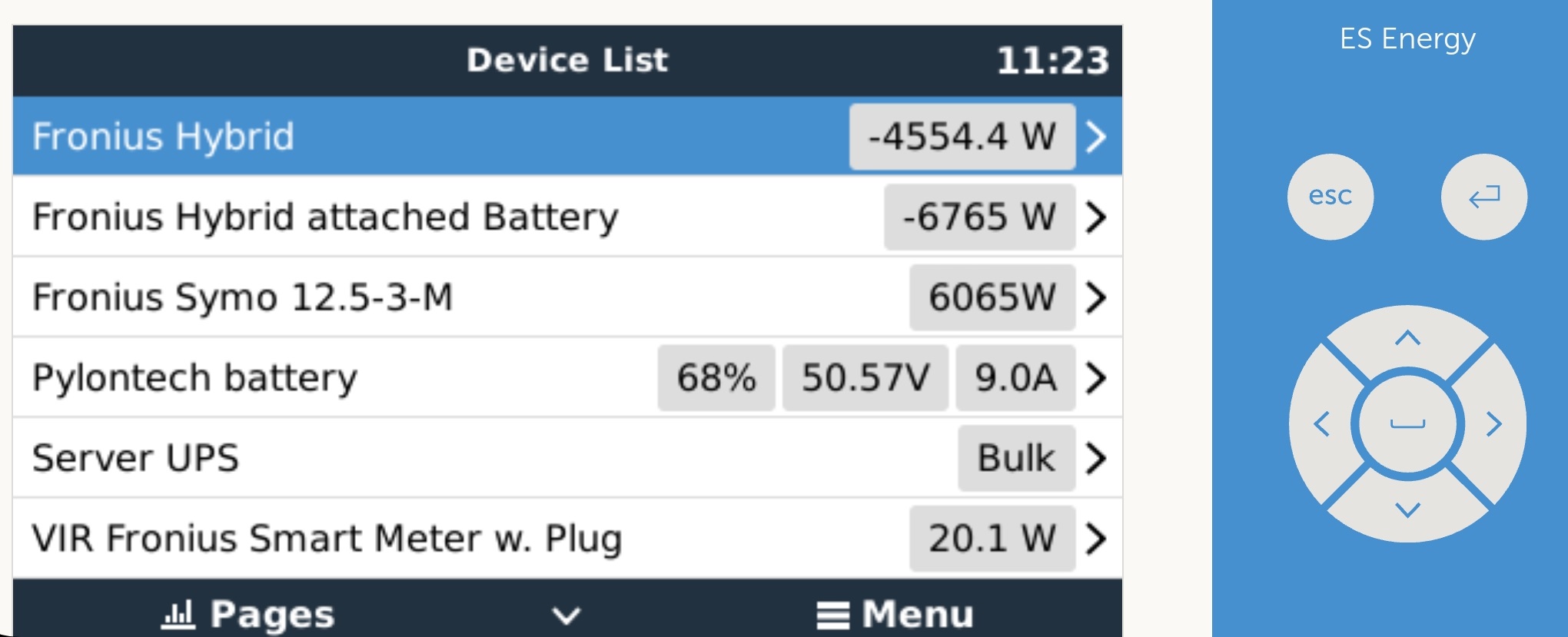

 - If there is no PV Overhead, discharge the Pylontech and feed only Critical Loads. (Minus the 30 Watts I like to have constantly flowing from "home grid" towards "ESS")
- If there is no PV Overhead, discharge the Pylontech and feed only Critical Loads. (Minus the 30 Watts I like to have constantly flowing from "home grid" towards "ESS")